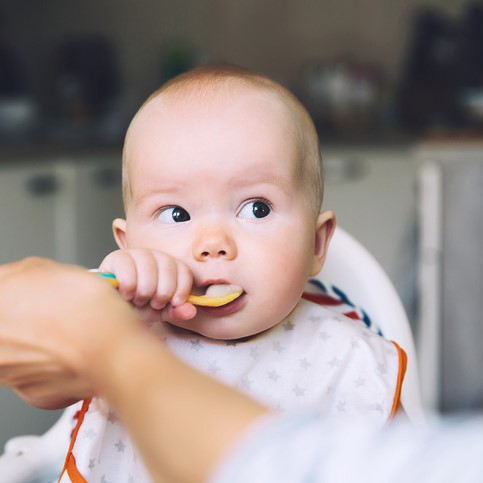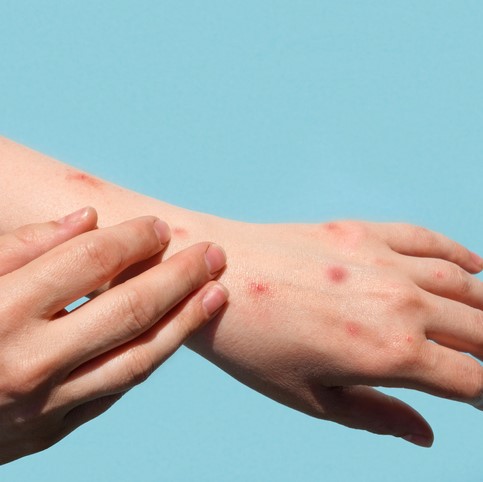Pregnancy Nutrition and Supplements
The importance of folic acid, iodine, folate, vitamin D and iron in pregnancy.
Folic Acid
So, what is it?
Folate is a naturally occurring essential B vitamin found in dark green leafy vegetables, citrus fruits, yeast, liver, and legumes. Folic acid is the synthetic or man-made version of folate which is found in supplements or fortified foods.
Why is it important for pregnancy?
Folic acid is an essential nutrient for your baby’s development; it helps the body make new cells. It also helps lower rates of birth defects of your baby’s brain, spine, and spinal cord, known as neural tube defects.
When should I take it?
The Ministry of Health recommends people start taking a daily folic acid supplement from the time they start trying for a baby, at least four weeks before conception, and through to 12 weeks of pregnancy. If you find out you’re pregnant and if you haven’t been taking your folic acid, start taking it right away.
How much do I need to take?
You need to take 800 micrograms (sometimes you’ll see it written as 800mcg/0.8mg) of folic acid per day. You can take it in a single tablet of just folic acid, or in a multivitamin but it’s important to make sure it contains the correct amount for a healthy pregnancy. Folic acid-only tablets can be purchased from pharmacies at a reduced cost with a prescription from your LMC. Pregnant people with a higher risk of a pregnancy with neural tube defects may need to take a higher dose and if this is the case for you, your LMC or GP will discuss which folic acid tablet is best for you.
Can I increase my food sources of folate instead of taking a folic acid supplement?
Folate is found in plenty of healthy foods such as spinach, broccoli, Brussels sprouts, oranges, and wholemeal breads so it’s a great idea to include more of these in your diet. However, you’d have to eat a lot (like A LOT) of these foods to get your required daily amount. For example, you’d need to have 500 grams of raw spinach daily to get enough folate for pregnancy. So, even pregnant people who are choosing foods that are naturally high in folate or fortified with folic acid will still need to take a folic acid tablet daily.
Iodine
So, what is it?
Iodine is a vital nutrient that is needed for optimal growth and brain development.
Why is it important for pregnancy?
When you’re pregnant, your iodine requirements are higher as your baby needs to receive an adequate amount of iodine from you, while you also need to continue to fulfill your own body’s needs.
How much do I need to take and when?
Pregnant people are advised to supplement with a daily iodine tablet of 150 microgram (150mcg/0.15mg) for the duration of their pregnancy and while breastfeeding and choose foods that are good sources of iodine as well. Iodine-only tablets can be purchased from pharmacies at a reduced cost with a prescription from your LMC. You may take it in multivitamin form but make sure it has the correct dosage for your pregnancy requirements.
Can I increase my food sources of iodine instead of taking it in a supplement?
Like folate, it’s difficult to get the required daily amount of iodine from your diet alone. The Ministry of Health advises taking a daily supplement tablet alongside foods that are a good source of iodine, like well-cooked seafood, milk, eggs, some cereals and commercially-made breads. If you’re seasoning a meal with salt, make sure that it’s iodised salt but be careful not to increase your overall salt intake.
Vitamin D
Known as the sunshine vitamin, vitamin D is another must for pregnancy nutrition as it is needed for strong bones and joints, and healthy muscle and nerve development in your baby. If you’re low in vitamin D throughout your pregnancy, your baby may be born with low levels too.
Don’t let the D stand for deficient – make the most of sunlight exposure (our main source of vitamin D in New Zealand) and spend some time outside so your skin can produce it naturally. The best and safest times are before 10am or after 4pm during September to April, and in the middle of the day from May to August. Be careful not to spend too long in the sun though, you don’t want to get sunburnt. There are some healthy food sources of vitamin D too, such as oily fish (like tuna, salmon, and sardines), eggs, some margarine, and fortified dairy products (yoghurt and milk).
Some people are at higher risk of vitamin D deficiency. If you have darker skin, have liver or kidney disease, take certain medications (such as antiepileptic drugs) or completely avoid exposure to the sun, you could be at higher risk of vitamin D deficiency. Also, those who live south of Nelson-Marlborough in winter are more likely to have low levels of vitamin D during late winter or early spring.
If you’re concerned that you are not getting enough vitamin D or think you are at risk of being deficient in vitamin D, speak to your LMC or GP about this.
Iron
Iron is another crucial mineral during pregnancy and, because of its role, a substantial amount is needed to meet both you and your baby’s needs. It is a vital component of haemoglobin in the blood, which carries oxygen through the tissues of your body and to your pēpi.
If you’re low in iron, you may feel fatigued or more tired than the usual amount in pregnancy. Severe maternal iron deficiency has been linked with low birth weight and premature birth.
To meet the recommended dietary intake of 27mg per day for the duration of your pregnancy, you should choose foods that are rich sources of iron. Haem iron is more easily absorbed by your body and is found in red meat like beef and lamb, chicken, fish, seafood, eggs and liver. If choosing liver, the recommendation is to eat no more than a small piece (100 g) once a week. If eating red meat, the recommendation is to have less than 500g of cooked (700-750g raw) red meat a week.
Non-haem iron is a plant-based source but is not as easily absorbed by the body. For this reason, vegan and vegetarian people who are pregnant may find it difficult to get enough iron. Good sources of non-haem iron are tofu, green vegetables, and legumes. To encourage the absorption of iron, include foods that are high in vitamin C in your meals, alongside your iron-rich sources. Cooked taro leaves, broccoli, tomatoes, oranges, kiwifruit, mangoes and pineapple are all high in vitamin C.
If you’re found to be low in iron, based on your blood tests, your LMC will offer you an oral supplement. However, if your low iron levels become more urgent and further supplementation is needed they may offer you an IV infusion.
Cravings and aversions
It is common for pregnant people to have strong likes (cravings) and dislikes (aversions) at some point during, or throughout, their pregnancy, especially when experiencing nausea. These food preferences are unlikely to be harmful, provided you’re mostly consuming a variety of healthy foods, majority of the time – see our simple daily nutrition guide for pregnant people.
On a very rare occasion, a pregnant person may crave something that isn’t considered food, like chalk, clay, soil, sand or starch (e.g. laundry powder). This is called pica and eating these non-food items can be harmful to pregnancy as they may contain heavy metals or pesticides. If you are experiencing problems with pica cravings, discuss your concerns with your LMC.



